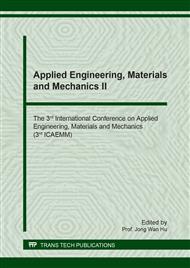p.51
p.56
p.62
p.67
p.72
p.77
p.82
p.88
p.94
Investigation of the Influence of Heat Treatment on the Strength of FGRP Used in Sandwich Constructions
Abstract:
The article presents the data of an experimental study on how heat treatment influences the physical and mechanical properties of cured samples of sandwich structures. The sandwich structures were made using VaRTM method. Heat treatment at 80 °С and 60 °С leads to increase in the bending strength. Three-point bend tests of sandwich structures and FGRP were conducted. Also, hardness and tensile strength were determined. Heat treatment results in increase of bending stress of FGRP by 71%, via the the tensile strength of heat-treated FGRP increased by 78%. The results characterize the relationship between the durability and the temperature and exposure time of the sandwich structures. The results correlate with the data of swelling of the cured binder. As a result of heat treatment at 80 °С for 4 hours, the extent of swelling decreased by 14%. The heat treatment of sandwich structures at a temperature of 80 °С for 4 hours is optimal and leads to increase in the tensile strength by 30.7%.
Info:
Periodical:
Pages:
72-76
Citation:
Online since:
July 2018
Authors:
Price:
Сopyright:
© 2018 Trans Tech Publications Ltd. All Rights Reserved
Share:
Citation:


